 Multiple Choice Questions
Multiple Choice QuestionsWhen you add about 2 ml of acetic acid to a test tube containing an equal amount of distilled water and leave the test tube to settle after shaking its contents, what will you observe in the test tube after about 5 minutes?
A white precipitate settling at its bottom
A clear colorless solution
A layer of water over the layer of acetic acid.
A layer of water over the layer of acetic acid.
A student adds a few drops of ethanoic acid to test tubes X, Y and Z containing aqueous solutions of sodium chloride, sodium hydroxide and sodium carbonate, respectively. If he now brings a burning splinter near the mouth of the test tubes immediately after adding ethanoic acid in each one of them, in which of the test tube or test tubes the flame will be extinguished?
X and Y
Y and Z
X and Z
X and Z
In order to study saponification reaction, we first prepare 20% solution of sodium hydroxide. If we record the temperature of this solution just after adding sodium hydroxide flakes to water and also test its nature using litmus, it may be concluded that the process of making this solution is
Exothermic and the solution is alkaline
Endothermic and the solution is alkaline
Endothermic and the solution is acidic
Endothermic and the solution is acidic
While studying saponification reaction for the preparation of soap, a teacher suggested to a student to add a small quantity of common salt to the reaction mixture. The function of common salt in this reaction is to
Reduce the alkalinity of the soap
reduce the acidity of the soap
enhance the cleansing capacity of soap
enhance the cleansing capacity of soap
A student takes about 6 ml of distilled water in each of the four test tubes P, Q, R and S. He then dissolves an equal amount of four different salts namely, sodium chloride in 'P', potassium chloride in ‘Q’, calcium chloride in ‘R’ and magnesium chloride in ‘S’. He then adds 10 drops of soap solution to each test tube and shakes its contents. The test tube in which scum (insoluble substance) is formed with soap is:
P and Q
Q and R
R and S
R and S
A student has obtained the image of a distant object with a concave mirror to determine its focal length. If he has selected a well-illuminated red building as an object, which of the following correctly describes the features of the image formed?
Virtual, inverted and diminished image in red shade
Real, erect and diminished image in pink shade
Real, inverted and diminished image in red shade
Real, inverted and diminished image in red shade
A student has obtained an image of a distant object on a screen to determine the focal length F1 of the given lens. His teacher, after checking the image, gave him another lens of focal length F2 and asked him to focus the same object on the same screen. The student found that to obtain a sharp image, he has to move the lens away from the screen. From this finding, we may conclude that both the lens given to the students were:
Concave and F1 < F2
Convex and F1< F2
Convex and F1> F2
Convex and F1> F2
Study the following four experimental set-ups I, II, III and IV for the experiment, 'To trace the path of a ray of light through a rectangular glass slab.'
Which of the marked set-ups is likely to give best results( P1 and P2 are the position of pins fixed on the incident ray)?
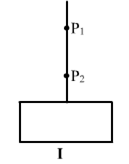
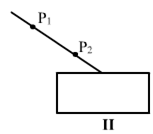
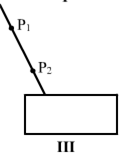
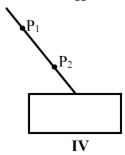
On the basis of the experiment, 'To trace the path of a ray of light through a rectangular glass slab', students of a class arrived at which one of the following conclusions?
Angle of incidence is greater than the angle of emergence.
Angle of emergence is smaller than the angle of refraction.
Emergent ray is parallel to the refracted ray
Emergent ray is parallel to the refracted ray
The path of a ray of light passing through a glass prism is shown below:
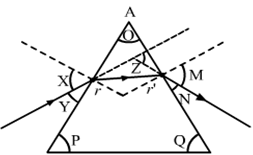
In this diagram, the angle of prism, angle of incidence, angle of emergence and angle of deviation respectively have been represented by:
O, Y, Z and N
P, Y, M and Z
O, X, M and Z
O, X, M and Z